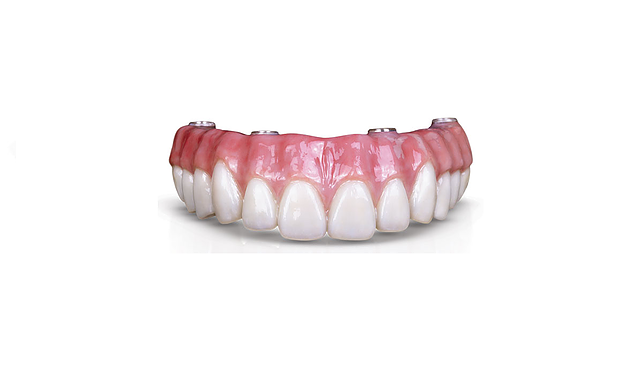The Ultimate Guide To Dental Sense
Table of ContentsSee This Report about Dental SenseThe Basic Principles Of Dental Sense Dental Sense Fundamentals ExplainedFascination About Dental Sense
are clinical tools operatively dental implanted into the jaw to restore an individual's ability to eat or their appearance. They supply support for man-made (phony) teeth, such as crowns, bridges, or dentures. When a tooth is lost because of injury or disease, an individual can experience problems such as quick bone loss, faulty speech, or adjustments to eating patterns that lead to pain.Oral implant systems contain an oral implant body and oral implant abutment and might also consist of a joint fixation screw. Kids dental. The dental implant body is surgically put in the jawbone instead of the tooth's origin. The dental implant joint is generally affixed to the implant body by the abutment addiction screw and extends via gums right into the mouth to support the affixed synthetic teeth
(https://matthewmusic33101.wixsite.com/dental-sense/post/dental-veneers-cost-kids-dental-and-dental-implant-vs-bridge-what-you-need-to-know)Structure of The Dental Implant System selecting dental implants, speak to your dental company about the possible advantages and dangers, and whether you are a prospect for the procedure. Points to consider: Your total wellness is a vital factor in determining whether you are an excellent prospect for oral implants, the length of time it will certainly take to heal, and how much time the implant may remain in place.
Smoking cigarettes may impact the healing procedure and lower the long-term success of the implant. The recovery process for the dental implant body may take numerous months or longer, during which time you normally have a momentary joint instead of the tooth. the dental implant procedure: Very carefully follow the dental hygiene instructions provided to you by your oral company.
The 3-Minute Rule for Dental Sense
Implant failure can cause the demand for an additional surgery to repair or replace the dental implant system. Restores the capability to chew Recovers aesthetic look Helps maintain the jawbone from shrinking because of bone loss Maintains the health of the surrounding bone and gum tissues Helps maintain adjacent (close-by) teeth steady Enhances lifestyle Damages to bordering natural teeth throughout implant placement Injury to the surrounding tissues during surgery, such as sinus perforation Injury throughout surgical procedure (for instance, crack of bordering jawbone) Poor feature, such as really feeling like the teeth do not bite together typically A sensation that the tooth is loose or turning in position arising from an abutment screw loosening Implant body failure (looseness of the dental implant body) due to systemic infection, which might be most likely in patients with unrestrained diabetes mellitus because of local infection in bone and gums sustaining the implant body because of delayed healing, which might be most likely in clients who smoke Difficulty cleaning the gum tissues around the implant, leading to inadequate dental hygiene Neglected gum condition Post-surgical pins and needles as a result of nerve impingement or damages Constantly inform healthcare companies and imaging professionals that you have dental implants prior to any type of magnetic vibration imaging (MRI) or x-ray treatments.
FDA is not mindful of any type of damaging occasions reported for MRI or x-ray treatments with oral implants. Oral implants systems are generally constructed from materials that comply with international agreement requirements of the International Organization for Standardization (ISO) or ASTM International. These standards have information of what makes a secure material.

A dental implant is a framework that changes a missing out on tooth. With screw-like devices, the surgeon inserts an implant right into the jawbone, and it acts as a support for a man-made tooth, called a crown. A device called an abutment connects the synthetic tooth to the dental implant. The crown is tailor-made to fit the person's mouth and match the shade of their teeth.
What Does Dental Sense Mean?
Some people are not qualified for dental implant surgical treatment. It is for dental specialists to operate people with: severe illnessuncontrollable metabolic diseasebone or soft cells illness or infectionIf these issues are fixed, a person can have the surgical procedure. In, oral cosmetic surgeons abstain from running on people with: If individuals with any of the above undergo dental implant surgical procedure, there is a higher threat of the implant failing.

Dental implant surgical treatment is a customized procedure. It's not the same for every person. The complying with gives a basic introduction of what you can expect your dental practitioner, oral doctor, periodontist or prosthodontist to do: Put the implant operatively. Offer you time to heal. Affix the post and final crown, bridge or denture.
Next, your surgeon will meticulously place the oral implant into your jaw. Ultimately, your specialist will rearrange your gums and shut the cut with stitches. If your implant is near the front of your mouth, your dental practitioner will make a short-term tooth for you to use till you heal. This way, you won't have a void in your smile while you recover.
The Main Principles Of Dental Sense
Your provider can tell you what to anticipate in blog here your scenario. Throughout the healing phase, your jawbone should fuse to the dental implant. This process, called osseointegration, is vital for security and lasting success. This process can take anywhere from 3 to nine months. In some situations, it might take much longer.
When your implant heals, your dental expert can attach the joint (little connector blog post) and your last repair (crown, bridge or denture). This normally takes concerning one hour to finish and might need a 2nd small surgical procedure. You should not really feel any type of discomfort during your dental implant treatment since your provider will use drug to numb your periodontals.